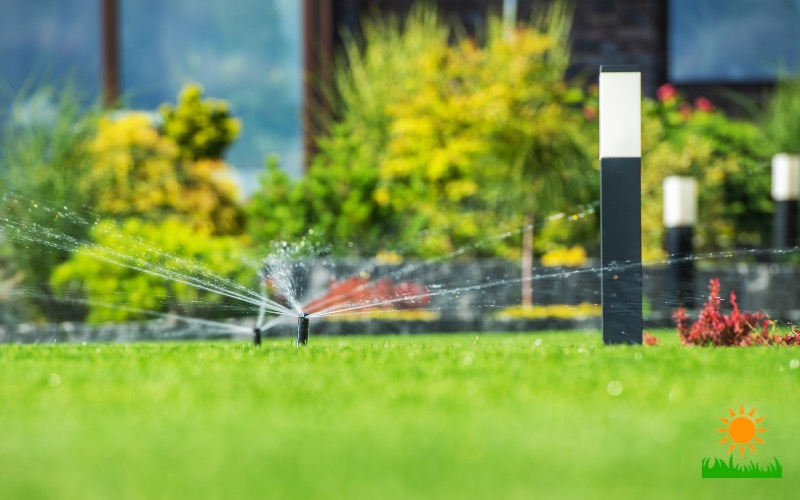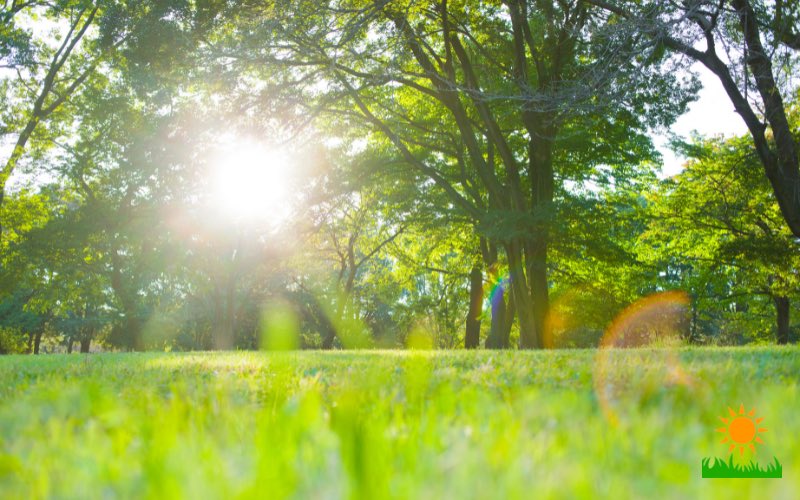Keeping your lawn nice and green can often be a struggle during the hotter months if there’s less rainfall or maybe even drought conditions. Generally, lawns need a fair amount of water to grow at their optimum level. This, of course, depends on the type of grass you have and also the type of soil.

Knowing the best way to take care of your lawn, especially when it comes to its watering needs is not always obvious and can be difficult if you live in an area with water restrictions. To help you out, we’ve compiled a list of 10 things you should know about watering your lawn. Read on to discover the absolute best way to look after your lawn this season.
10 Things You Should Know About Watering Your Lawn
1. Use A Hose End Sprinkler To Water Deeper And Less Frequently
There are many sprinklers available on the market so you need to find one that suits the size and area of your lawn best. It’s a good idea to install a simple timer on the tap which the hose is attached to so that you don’t forget to turn it off.
Your water pressure and the size of lawn you have will determine how long you should leave your sprinkler on. Just make sure you give the grass a deep watering. Then you only need to run your sprinkler every few days.
2. Consider Installing An In-Ground Irrigation System If You Have A Large Lawn
An in-ground irrigation system is often more efficient than using a sprinkler because you can determine the exact flow of the water. Since these systems are low to the ground, there’s less chance of the water evaporating before it gets to the roots of your grass.
A lot of irrigation systems are designed to provide optimum watering without wasting precious water and are ideal for hot climates. If you have low water pressure, there are also rotary nozzles available. These are designed to deliver water to your lawn in an even stream and at a slower rate than other nozzle types.
3. Install A Programmable Timer
There have been many advances in technology in relation to irrigation timers, one of which is the programmable timer. Smart programmable timers can adjust the watering schedule based on average temperatures, local rainfall and evaporation rates.
Think about investing in one of these timers, as it can help you to take the guess work out of when and for how long you should water your lawn area.
4. Water In The Early Morning

Set your watering system to come on in the early morning, preferably before dawn, whenever possible. The temperature is usually cooler and the sun isn’t high enough to evaporate the water before it gets down into the soil of your lawn.
This ensures that all the water is getting to where it’s needed most. Try to avoid watering your lawns in the evening or at night as this can invite disease problems.
5. Test Your Soil
Before you set your watering schedule, determine what type of soil you have. Clay soil is unable to absorb water quickly however it will retain the water for much longer. This means you should water in shorter cycles but repeatedly.
So for example, set your timer for say 10 minutes, then have it turn off for around 10-15 minutes and then set it to come on again for another 10 minutes or so. These times are purely examples only. The amount of time for the watering and the resting time depends on your particular soil and other things like water pressure.
You’ll need to do a couple of trials when you first set up your schedule to see exactly what works best for your lawn.
6. Use Shorter Spaced Out Cycles When Watering Slopes
When watering slopes, it’s a good idea to use the same system we discussed above on how to water clay soils. You don’t want to add too much water at any one time as the excess will just run off and go to waste.
Once again, you’ll need to monitor the watering the first couple of times to see what works best for your area of lawn.
7. Remember That Shady Lawns Need Less Water
If your lawn is shaded for most of the day, then it will require much less watering than a lawn which is exposed to full sunlight for many hours. Be aware though if your grass is growing near tree roots, it may need a little more water as the tree roots will compete with the grass for any available moisture.
8. Newly Laid Turf Or Seeded Areas Need More Watering
If you’ve just laid a new sod lawn, you’ll need to water it every day for at least the first week to encourage the roots to take hold. After a week you should then water less frequently as this will encourage the root to go deeper in search of moisture and nutrients.
For seeded areas, you may need to water twice a day in the beginning to encourage the lawn seeds to germinate quickly. Don’t let the soil dry out completely until your lawn is growing well and you’ve been able to mow your grass for the first time.
9. Don’t Waste Water By Watering Paths and Driveways
Make sure that you monitor your watering and adjust it accordingly if you find that you are watering your paths or driveway. You may need to adjust your nozzles and watering duration so that you’re not wasting precious water.
10. Adjust Your Watering Schedule According To The Season
You should monitor and reset your watering schedule at least once a month to take into account seasonal changes. Schedules should be set according to your area’s climate and rainfall.
It’s also good practice to check your soil moisture level frequently to ascertain exactly how much water your lawn is getting. Also check how deep the lawn roots are. A healthy lawn should have roots that go down into the soil for at least 4 inches.
We hope that our 10 things that you should know about watering your lawns have helped you to better understand the most efficient way to keep your lawn thriving and growing happily. If you follow these tips, you’ll have a great looking lawn all season long and will be the envy of your neighbors.
